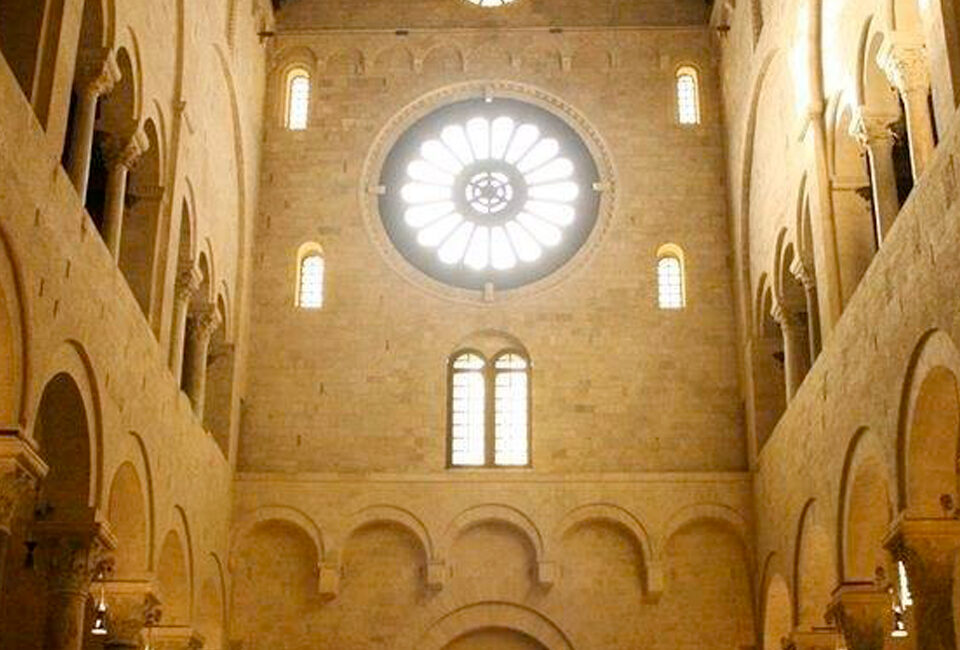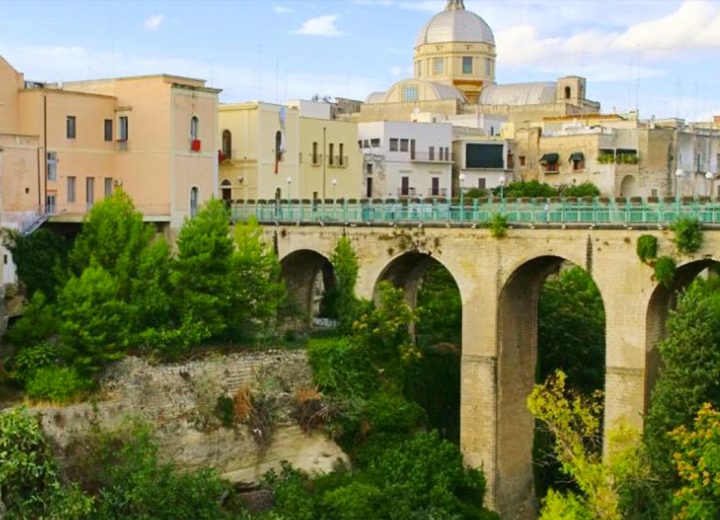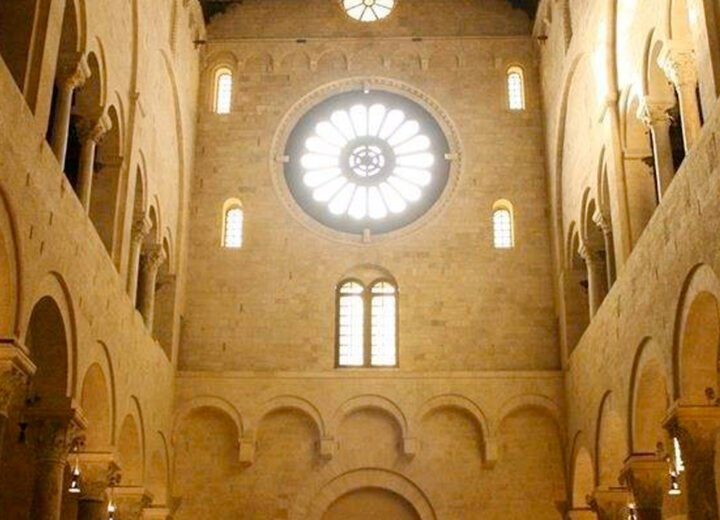
Puglia between cathedrals, rock churches and coastal towers
Puglia is an ancient land, where among charming villages and breathtaking landscapes, imposing Romanesque cathedrals stand out against the sky, of which the best known is the Basilica of San Nicola in Bari, the most suggestive that of San Nicola Pellegrino a Trani, suspended over the sea, like San Corrado a Molfetta. Masterpieces of Apulian Romanesque art, which reveal the influences of the Arab, Jewish and Syrian world, such as the Cathedral of the Assumption in Troia. Cathedrals give way to majestic and imposing Frederick castles in places where nature was once luxuriant and allowed the much-loved falconry. From Lucera with the great Palatium to the majestic Ducal castle of Bovino; from thecastello Svevo di Vieste overlooking the sea, to the manor of Monte S. Angelo with its 360 degree view. Passing through the enigmatic Castel del Monte on a height of 500 meters, you finally arrive at the splendid Castello di Oria, protagonist of the wedding of Federico II with Jolanda di Brienne.
Among the rocks of Puglia, secret territories are discovered such as ancient rock churches and evocative places of worship. The itineraries of this secret Puglia start fromPulsano Abbey and its 24 overhanging hermitages, to then move on to the imposing rock crypts from San Michele di Gravina in Puglia at Lama d’Antico at Fasano, up to the ravines of Bari, Taranto, including the Byzantine crypts of Massafra and Mottola, and Salento. It was the custom for men of faith, peasants and shepherds to pray in these caves which then, around the year 1000, were transformed into frescoed chapels which still retain the charm of the past, like the crypt of S. Cristina in Carpignano Salentino.
The mighty coastal towers of Puglia dominate the sea, scrutinizing the horizon. Built over the centuries by Normans, Swabians and Angevins, there were almost 400 throughout the kingdom of Naples, of which 150 in Puglia alone. They were mostly used to spot those approaching the coasts. Small with a square or round plan, or, mainly on the Ionian side, imposing and with the function of a command station where men gathered and weapons and food were stored. Starting from the north, the austere Torre Mileto in San Nicandro Garganico and Torre San Felice in Vieste can be admired, up to the scenic Salento coast where numerous small and medium-sized towers alternate.
Finally, Apulian architecture expresses its charm in the Baroque, with its sumptuous and redundant excesses made of fantastic statues and decorations, carved in the soft cream-colored stone. The exuberant architectural style of the Baroque churches asserts itself particularly in Salento and throughout the region: from the Church of the Addolorata in Foggia to the Sanctuary Maria SS. del Soccorso at San Severofrom the Madonna delle Grazie in Gravina in Puglia to S. Maria in Betlem in Mesagne, up to Martina Franca, Nardò and Galatone. The Baroque reaches its apotheosis in the splendid Basilica of S. Croce in Lecce. Theatricality is also imbued in religious rites and in the Living Passions, very important and participatory is certainly that of the village of Taranto, which are relived during the Easter period throughout Puglia.




0 Comments